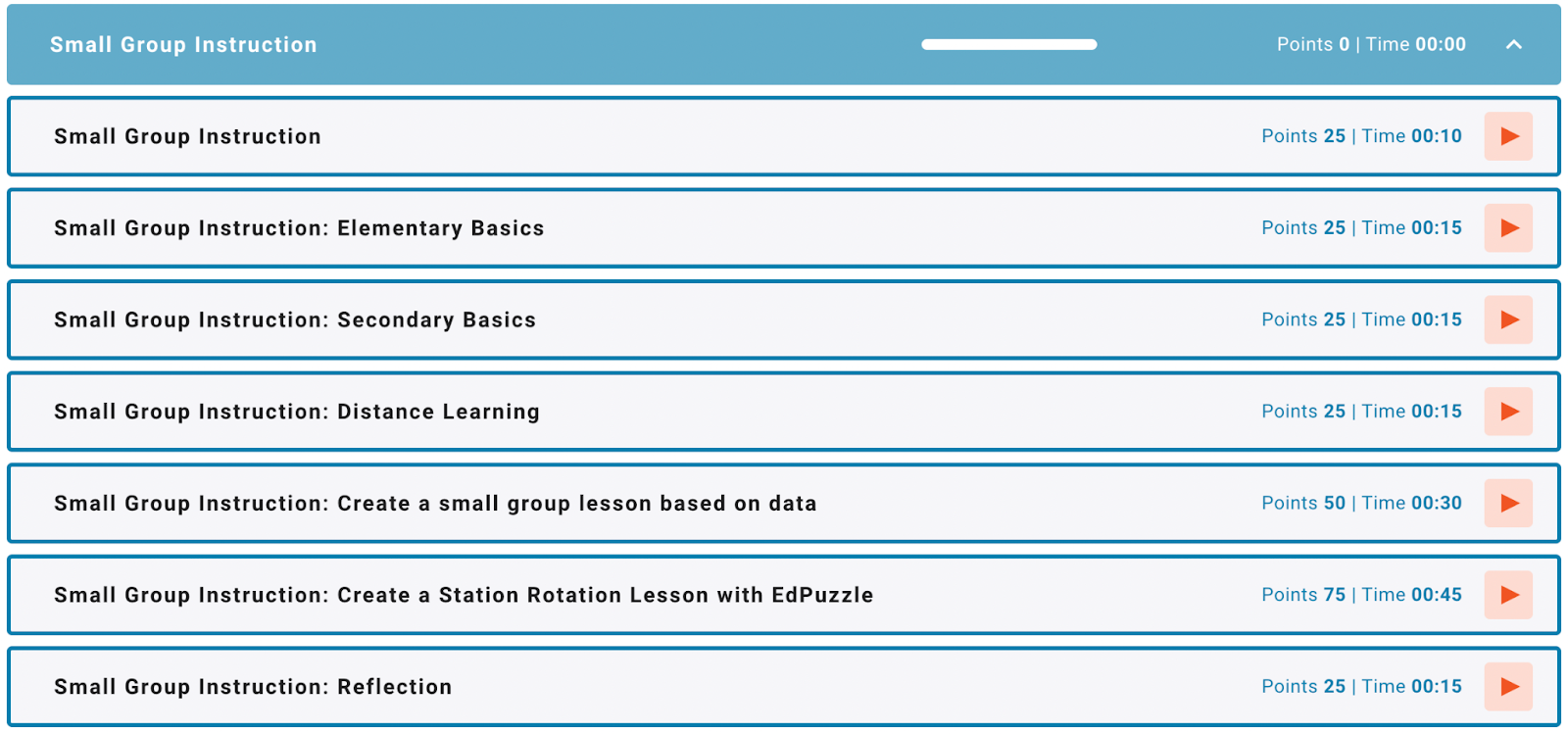Quick Tip Wednesday: How to Set Up a Gratitude Month
Welcome back to Quick Tip Wednesday!
6 min read
Julia Francis : Aug 17, 2022 11:00:00 AM

“Instead of focusing on the relationship between class size and student attainment, we should be looking at the relationship between class size and effective teaching.” -Peter Blatchford
With an ongoing teacher shortage in the United States, it’s no wonder that class sizes are a topic of discussion. When teachers are responsible for a large number of students in the classroom, the quality and effectiveness of teaching can suffer because teachers don’t have time to provide the individual support that students need.
One way that teachers can mitigate large class sizes is to focus on small group instruction where it makes sense. At Alludo, we know that small classes can improve learning, which is why we’ve included courses and microlearning activities about small group instruction in our professional development catalog that districts and schools can utilize in their unique training programs.
Here are five benefits of small group instruction with lesson plan examples for you to consider.
Teachers know that students don’t always grasp new information at the same pace or in the same way. Presenting to the entire class is a necessary part of teaching but may leave some students struggling to catch up. That’s where small group instruction comes in.
Small group instruction has these characteristics:
/AL_11-Blog01-2.jpeg?width=450&name=AL_11-Blog01-2.jpeg)
The goal of small group instruction is to allow for differences in the way students learn and the pace at which they learn. Since no two students are alike, small group instruction allows the teacher to connect with students on an individual level. During small group sessions, the rest of the class should be working on an assignment.
Small group work plans may include activities such as these:
/AL_11-Blog01-3.jpeg?width=450&name=AL_11-Blog01-3.jpeg)
These are just a few lesson plan examples for you to consider. The possibilities are endless and the key is to group students in such a way that they can improve their learning regardless of the activity.
Does small group instruction help teachers do a better job of teaching and make it easier for students to learn? There are several ways that small group instruction is superior to whole class instruction when it comes to student learning.
Small group instruction gives teachers time to observe students and listen to what they have to say in a way that whole class instruction does not. Conversation can occur more naturally in a group of two to six students than it can in a classroom of 30 students.
In a small group, teachers have the opportunity to observe how students work and listen to their feedback. Both elements can improve student learning.
Small group instruction allows teachers to collaborate with students. Collaboration may involve allowing students to set the direction for how to approach an assignment. Giving students a choice in the methods used in instruction can help teachers understand what they need and want.
Teachers can, of course, offer suggestions and guidance, but the goal should be to learn as much as possible about how students learn.
Students can do a lot to help each other and that’s another way that small group learning can be superior to whole class instruction. Teachers can offer students the opportunity to explain concepts and ideas to one another.
Teachers are sometimes amazed at how well students can teach one another and small group instruction can be instructive for everybody, including teachers.
Small group instruction benefits teachers, but its biggest benefits accrue to students. Here are five that illustrate how useful small group instruction can be.
In our Teacher Happiness Report, we surveyed teachers in districts about their satisfaction. High workloads and low compensation were two of the key factors, with relevant PD coming in a close third.
With small group instruction, teachers have the opportunity to provide individualized instruction on a smaller and more direct scale than they can when teaching an entire class.
Students may be grouped homogeneously (putting students at the same level together) or heterogeneously (grouping students at different levels) and either way, teachers can spend one-on-one time to help students progress.
It may be all too easy for some students to disengage during whole class instruction. With limited opportunities to ask questions or share their thoughts, they may feel intimidated and allow their minds and attention to wander.
In small groups, students can have a say in how they learn and may feel more empowered to let the teacher know when they don’t understand something or have an idea to share with the group.
/AL_11-Blog01-4.jpeg?width=450&name=AL_11-Blog01-4.jpeg)
Teachers may find it difficult to provide personalized feedback in some situations. Small groups make it easy for teachers to give students the one-on-one attention they need, to observe their learning in action, and to provide constructive feedback.
Students take personalized feedback and use it during whole class instruction and when doing homework, so the result is improved student outcomes.
Finally, small group instruction helps students gain confidence. For example, when teachers allow students to drive lessons by choosing how to learn or even by teaching one another, students become aware of their abilities and grow in self-esteem.
Students who participate in small group instruction are more likely to feel confident when participating in whole class discussions as well as in small groups.
There’s no question that small group instruction can be beneficial to students and teachers, but when is it appropriate to implement it in the classroom?
Small groups are most effective when students have had the opportunity to get to know the teacher and one another, so for that reason, we suggest waiting until after the first six weeks of school to begin. Waiting also provides teachers with the time they need to assess students’ progress and determine the best way to group them.
In most cases, students will benefit from meeting in small groups three to five times a week. The implementation of small group sessions should include a pre-assessment period for the teacher, direct instruction with groups, and post-assessment time for the teacher.
The Alludo platform can include access to our curated catalog of professional development content, that contains pedagogic strategies to support small group instruction. For example, our Small Group Instruction mission includes seven microlearning activities to help teachers learn about small group strategies and how to implement them in their classrooms.

Providing teachers with the information they need about small group instruction empowers them to incorporate small groups into their lesson plans and reap the benefits in the classroom for themselves and their students.
We use gamified learning to encourage teacher engagement and make it easy for teachers to complete their personal development requirements and electives on their own schedule. When teachers have a voice and a choice, they will pass their enthusiasm and empowerment on to their students.
Students who learn in small groups are engaged in what they learn, empowered to ask questions and help one another, and have the opportunity to grasp material at a pace that works for them. Small group learning allows students and teachers to learn from one another.
Want to reach up to 100% PD in your district? See how Alludo can help make it happen with our free professional development platform trial, including:
.png)
Welcome back to Quick Tip Wednesday!

Mid-Year Reflection: Your Secret to a Stronger Second Semester
A great way to get your learners engaged in your Alludo program is by keeping the content in your program up-to-date and relevant. Rebecca has...